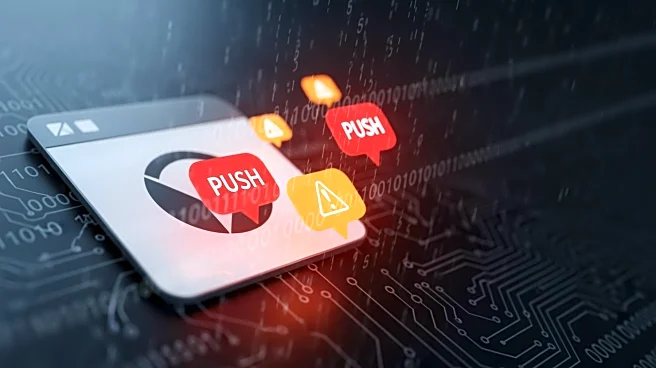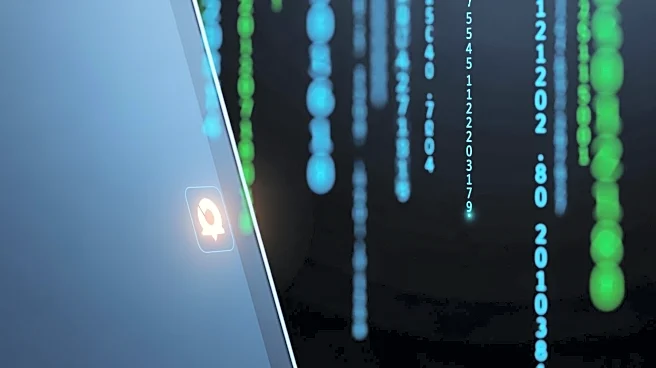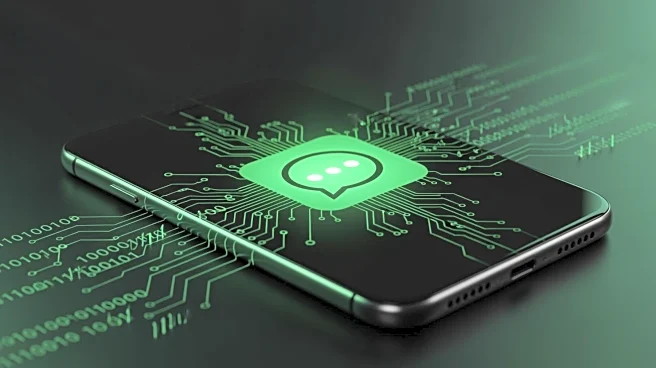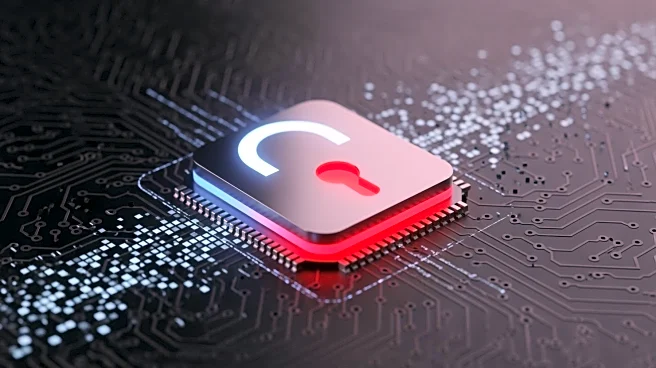What's Happening?
Cybercriminals are utilizing a newly discovered command-and-control platform, Matrix Push C2, to deliver malware through web browser push notifications. Discovered by BlackFrog, this platform tricks users
into allowing browser notifications via social engineering tactics on compromised websites. Once subscribed, users receive fake system notifications that appear legitimate, leading them to phishing sites or malware downloads. The attack is fileless, operating through the browser's notification system, and affects multiple operating systems, including Windows, Mac, Linux, and Android.
Why It's Important?
The exploitation of browser push notifications by cybercriminals represents a significant threat due to its ability to bypass traditional security measures. This method allows attackers to maintain a live connection with victims' browsers, providing real-time intelligence and control. The widespread use of web browsers across various devices makes this attack vector particularly concerning, as it can affect a large number of users. Organizations and individuals must be vigilant about granting notification permissions and consider implementing anti-data exfiltration technologies to protect against such threats.
What's Next?
To counter the threat posed by Matrix Push C2, cybersecurity experts recommend using anti-data exfiltration technology to block outbound traffic. Organizations may need to review their security policies regarding browser notifications and educate users on the risks of social engineering attacks. As cybercriminals continue to innovate, security measures must evolve to address new vulnerabilities. The ongoing monitoring and analysis of such threats will be crucial in developing effective countermeasures and protecting users from malware delivery via browser notifications.











